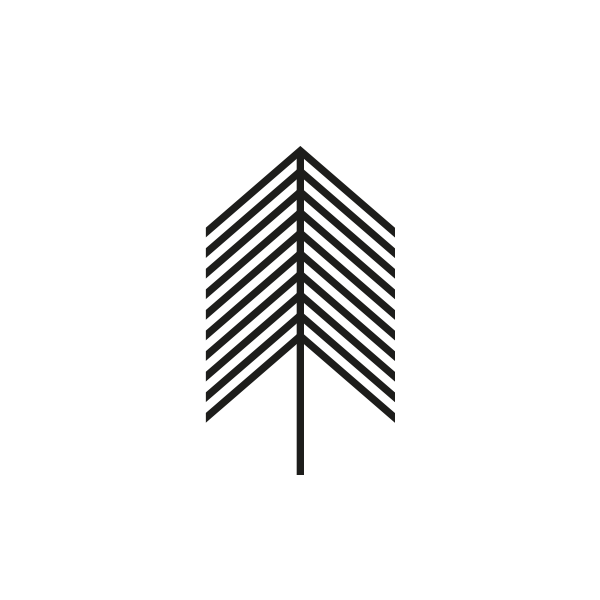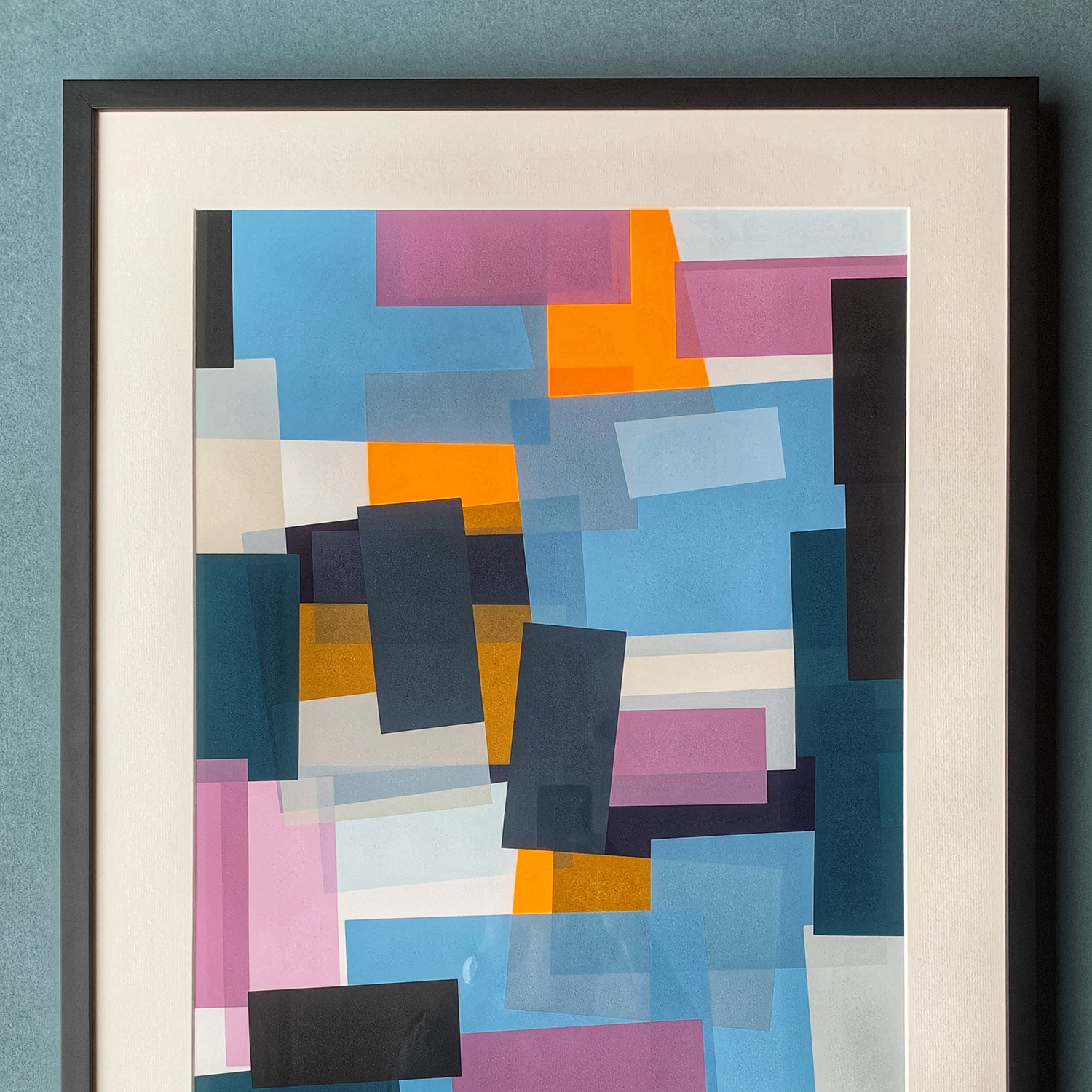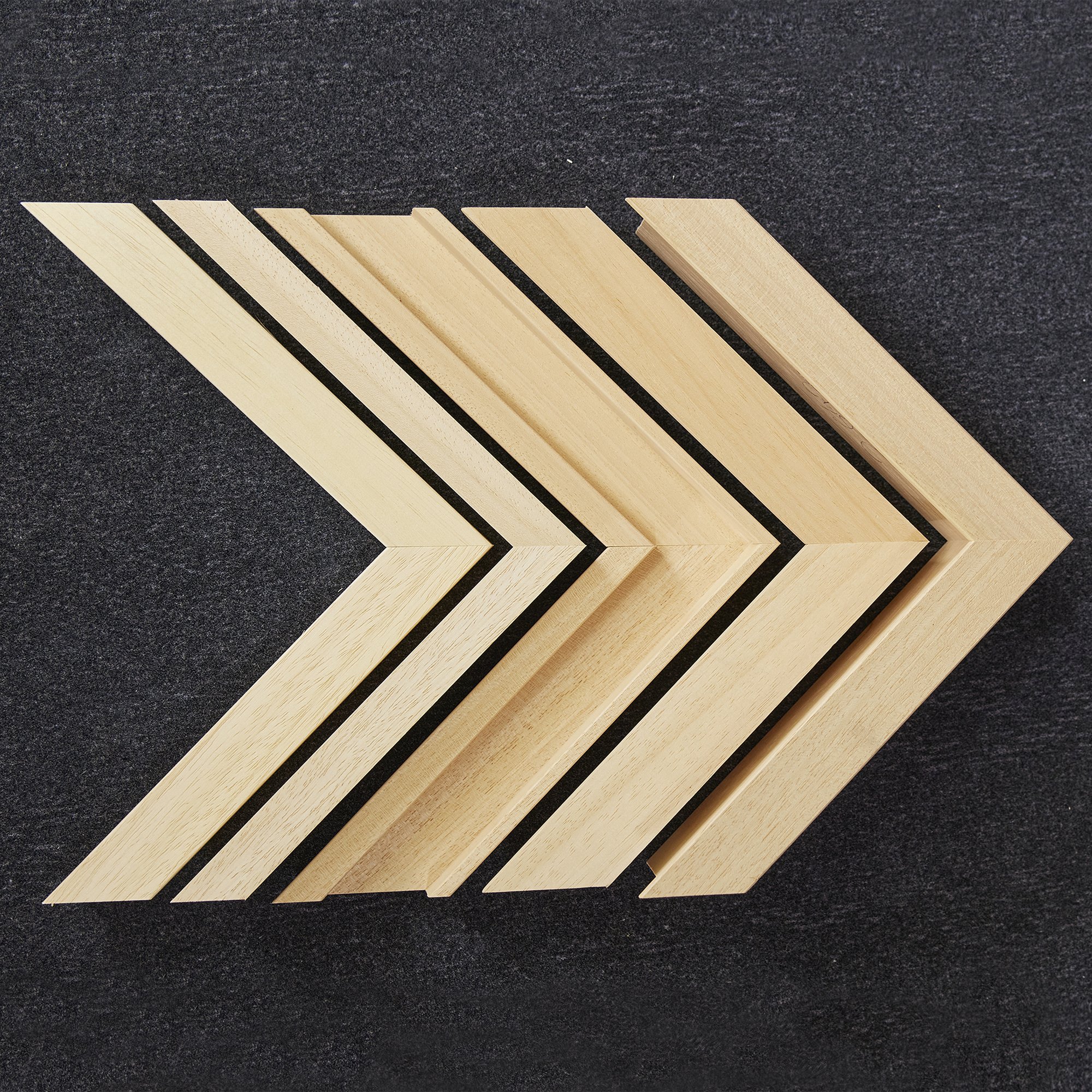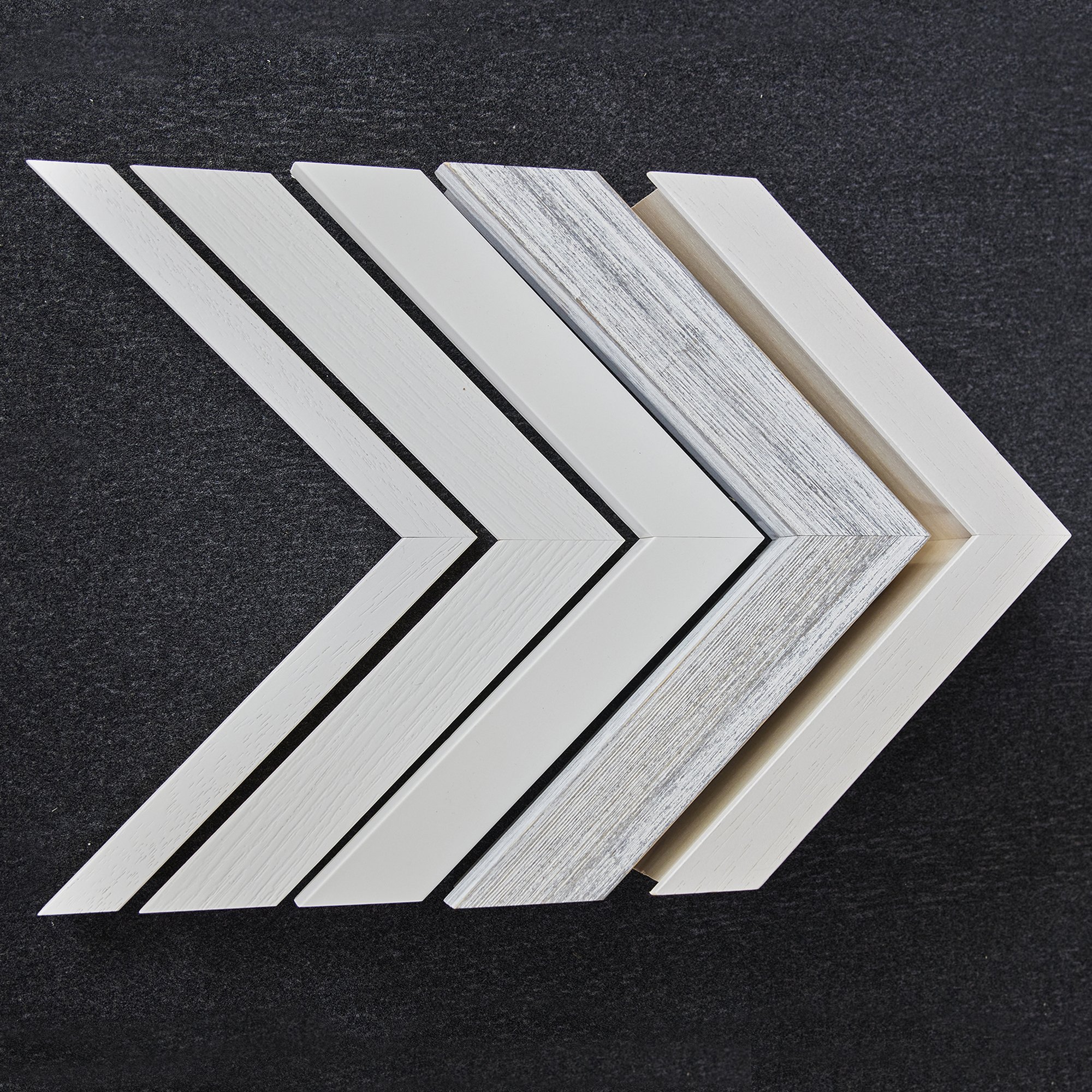
BESPOKE ART FRAMING
All of my materials are conservation grade to ensure your artwork is protected for decades to come and the wood is sustainably sourced
BESPOKE FRAMING STEPS
CONSULTATION
Get in touch online or call me to make an appointment. You can come to my workshop in Farnham, or I can come to your home to discuss your framing needs.
I will advise on the colour, style and size of the frame during our consultation in the workshop or in your home. We will consider location, light and colours to suit you.
THE FRAME
What type of frame will complement and enhance your piece of art? There are many ways to effectively display your piece of art, canvas, textile or sport memorabilia. Perhaps a box or tray frame, or a simpler frame - but always using colour and size to enhance, not compete with the piece.
FRAME OPTIONS FOR CONSIDERATION
TYPE OF FRAME MOULDING
I have a wide variety of frame samples to chose from - you may have a particular favourite or leave the choice to me. I work with many different types of frame mouldings including bare wood, pre painted or hand painted to your choice.
DO YOU HAVE SOMETHING ELSE IN MIND?
All my frames are made to order, and I’m always up for a challenge.
I WORK TO A CONSERVATION LEVEL OF FRAMING
A mount and a frame should always be selected to protect as well as enhance a picture. ‘Conservation Framing’, is a term used to describe the use of materials and techniques which provide protection to framed works of art on paper. There are different levels according to the quality and specification of the materials used.
-
The Fine Art Guild Levels of Framing:
Level 1 – Ultimate Level/ Museum Framing
Ultimate protection using conservation methods and the best quality conservation materials. Processes are intended to be fully reversible for at least 35 years, which means that the framed work can be returned to its former state, i.e. prior to framing, at any time, assuming that the artwork is not inherently unstable.
Level 2 – High level protection using conservation methods and conservation materials/ Conservation Framing
Conservation framing gives a high level of protection for your artwork or objects. By using conservation quality materials and the best techniques, the framer can give your work protection from physical and mechanical damage, airborne pollution and acids generated by many framing materials. Conservation framing requires that all processes affecting the artwork be fully reversible. In other words, what you have framed can be returned to its former state for up to 20 years.
Level 3 – Mid level protection/Commended level
Commended framing should visually enhance the artwork and will give a moderate level of protection from physical and mechanical damage, airborne pollution and acid damage. Processes do not have to be reversible. The target time for this level of framing is around five years in normal conditions, but this can be improved by requesting Level 2 quality of materials, such as mountboard.
Level 4 – Low level Framing
Low level protection using basic materials and/or methods. Level 4 framing provides a basic frame at minimum cost; the price overrides the frame’s visual appearance and quality. There is no requirement to provide any protection or visual enhancement of the artwork at this level.
THE MOUNT
You may or may not need a mount to enhance and support your artwork.
I use conservation mountboard - it is made from chemically purified wood pulp and alkaline buffered. The core and facing must meet certain criteria such a light fastness and pH range.
Any tape and adhesives used are easy to remove and will not stain or darken with age. While the mount will enhance your art, its main role is to keep the piece away from the glass to allow for air movement. This can be done by other methods if no mount is used.
MOUNT COLOUR
Any colour, any design! There are many clever and subtle mountboard designs to draw your eye to the artwork.
MOUNT STYLES
Some examples of mountboard design
THE GLASS
There are three main types of Artglass I use - AR70, AR92 and AR99. If budget doesn’t allow for either of these, we can look to standard float glass. Alternatively acrylic is also an option.
-
Artglass AR 70 guarantees true colours while the invisible coating virtually eliminates reflection. Artglass AR 70 is an effective solution for invisible displays where exposure to UV is minimal. UV Block: 70%, Reflection: <1.0%
-
Artglass AR 92 is used where the clarity and trueness of colour are paramount while the danger of UV damage is present. UV Block: 92%, Reflection: <1.2%
-
Artglass AR 99 combines the highest possible UV protection with the ultimate transparency. The 99% UV block helps prevent fading of precious materials and colours over time while the anti-reflective coating makes the glass appear invisible. I recommend this conservation grade product for framing jobs that require the maximum UV protection combined with the ultimate transparency. UV Block:99%. Reflection: <1.0%
-
Acrylic to varying degrees of specification and thickness.
















